I first visited Hokkaido in early 2015—the trip did not go as planned, to say the least. The residents of southwestern Japan felt the same last week when their streets turned to mud, I imagined, as my Sapporo-bound jet flew over Hiroshima prefecture last Friday morning.
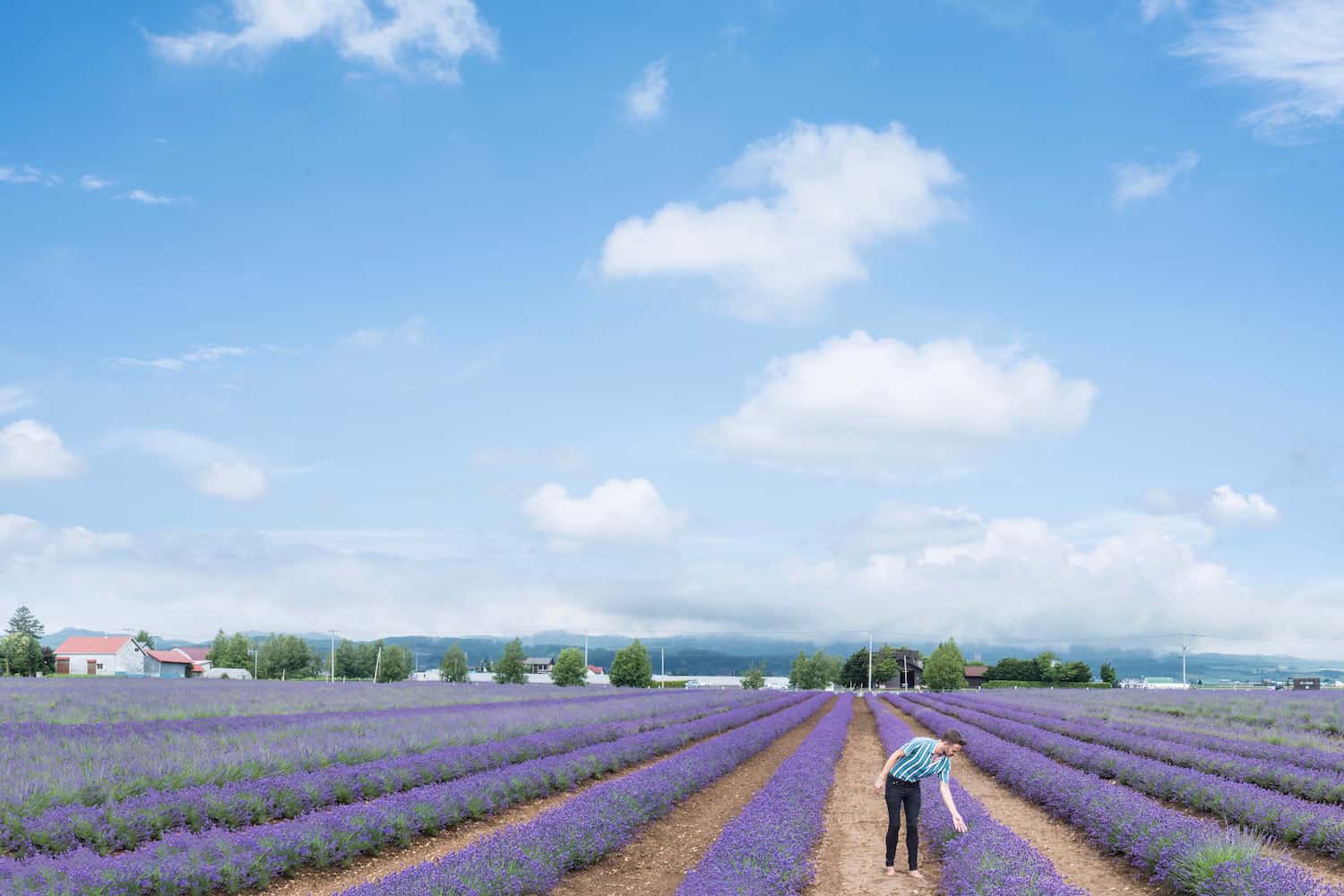
It was the middle of winter when I decided I would make my return to Hokkaido in summer. I’d come across a photo of lavender fields that were definitely not in France and, serendipitously, received an email marketing nonstop BKK-CTS flights at rates I couldn’t pass up, especially not when I realized I could travel at the peak of Hokkaido’s wildflower season.
As I drove into Furano, however, the scene around me was anything but summery, even if the air was a bit too warm for the jacket I was wearing, the lavender blossoms so perfectly purple it couldn’t be more than a few weeks post-solstice.
I drowned my disappointment in melted milk-flavored ice cream, which had liquified after it sat inside a de-seeded cantaloupe half for only a few minutes.
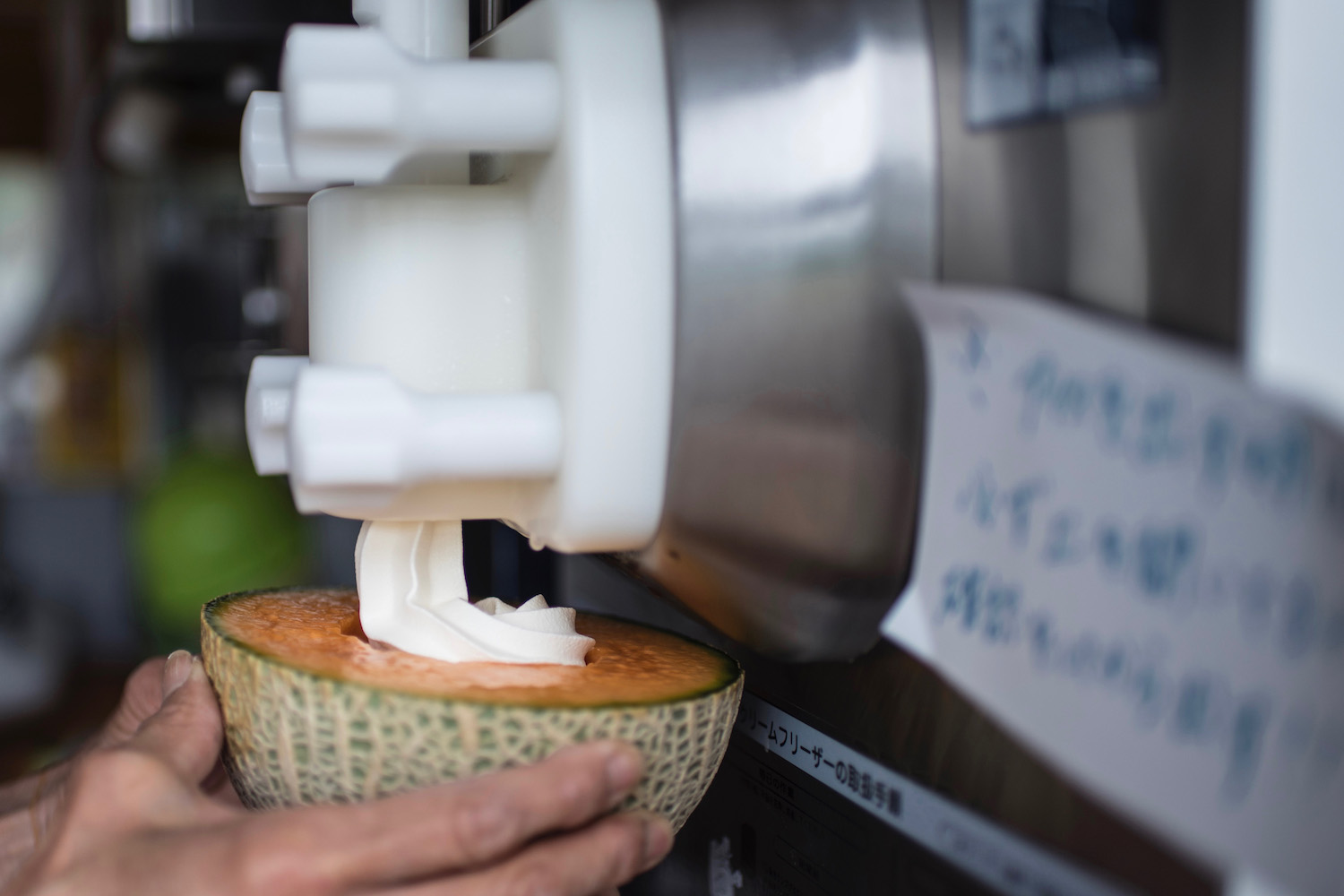
Saturday started with a jolt. I emerged into the waking world fresh out of a nightmare about bears, and decided to skip my morning run because I feared that many called the town of Biei (which is where you find Hokkaido points of interest like Shirogane Waterfall and the “Blue Pond” it feeds) home.
I was less prepared for the rain. It hadn’t been in the forecast for Hokkaido weather in July, not even the superior Japanese one.
“I’ll figure something out,” I vowed, referring to both of my thwarted plans. The loudest voice in my head was resolute.
The rest of them—and I do have a lot—were a chorus of cacophony, one hearkening back to my first Hokkaido trip (“This just isn’t your island,” it stated matter-of-factly) and another reminding me that this was precisely how my February visit to Okinawa had gone.
“You were optimistic then, too,” it noted, not inaccurately. “And look how that turned out.”
Still, as I pulled up to the “Lavender East” lobe of Farm Tomita (my Japanese friend Suguru had advised me that not as many tourists come here), I was encouraged by the fact that not a single other soul was present.
It wasn’t yet 6 am, of course, but in addition to the fact that I wouldn’t have to erase any photobombs in post-processing, there was no one to catch me in the act of what would amount to a crime in a place as crime-free as Japan. But I had to be bold in Hokkaido, certainly when it came to photography.
Hours after landing in on the island back in 2015, I’d made my way to the port city of Otaru, whose icicle-lined canal a member of Hokkaido tourism had recommended as the kick-off Hokkaido sightseeing stop of my winter trip to the island.
I’d headed directly to the seashore upon arriving at Otaru Station, but within moments of feeling inspired—I found a starfish buried in the snow—every traveler’s worst nightmare became my reality. My camera’s shutter just stopped firing, and none of my known hacks (nor the ones I scoured the internet for, in a panic) could get it to start again.
I didn’t see a single bear on Saturday, to say nothing of the fact that the staff of Lavender East (every one of them saw me posing between the rows of plants, feet sinking into the mud Friday’s rains had left like a deranged fool, snapping tripod selfies amid the Hokkaido lavender) chose not to chide me for my transgressions.
As for my run, I ended up taking it just before noon, a six-kilometer course that circled…er, squared the perimeter of the lavender. It was two by the time I approached the city of Asahikawa, and the sky gleamed a shade of cerulean that had only peaked through the clouds over the farm as I traipsed through its forbidden fields.
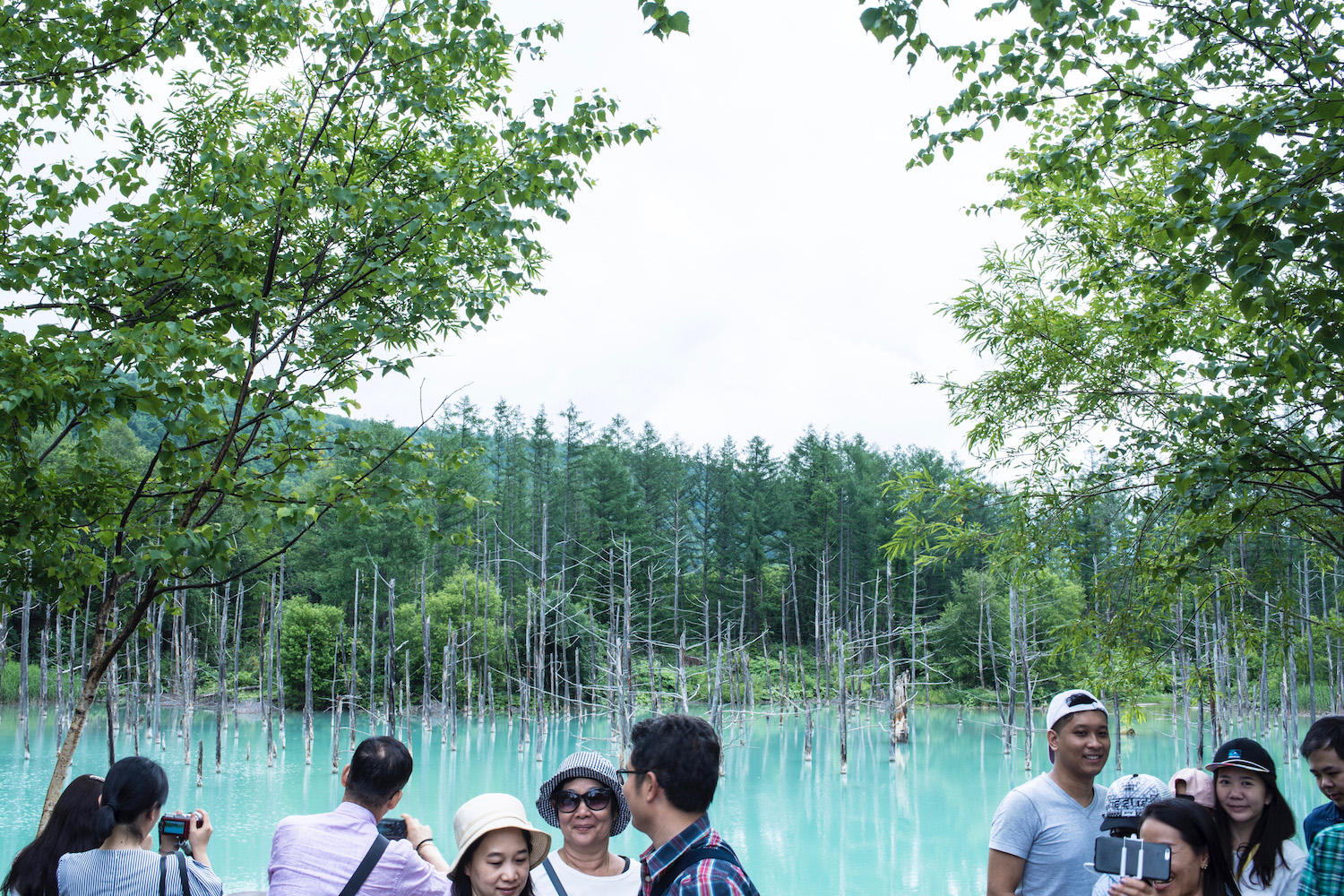
I took fireflies for granted when I was young—I just assumed they were part of summer, like the sun or the searing heat. None of these three things would greet me in Asahikawa, though I explicitly sought all of them.
Actually, that’s a lie. It was both sunny and hot as I circled the perimeter of Asahiyama Zoo, concerned less with seeing individual animals (there was no creature here I hadn’t observed in the wild) and more with the way I would frame my experience: It became clear, quite immediately, who was watching whom.
But the fireflies would evade me that night, even though I waited longer for them than I should have. For the sky to darken from blue to black; for mosquitos to become a source of pain instead of a simple annoyance. There were no fireflies to be seen in Numata Town on Saturday night, though dozens of children still had their nets at ready as I peaced out.
It must’ve been the recent rain, I thought to myself as I drove back to the city, as clueless about the lightning bug life cycle as I was about the true devastating this summer’s tsuyu (check) had wrought upon Japan.
Here I was whining about less-than-perfect skies in my photos, the fact that July, perhaps, was not the best time to visit Hokkaido. Half a dozen prefectures away there were dozens dead and hundreds homeless.
Appropriately, Sunday began with torrential rain, a downpour that accompanied me all to the shores of Lake Toya—I feared I might wreck en route. The sun neither rose nor set—is it really Sunday if not a single solar flare manifests?—though some middle-aged Chinese women did pay me a compliment, lakefront, as the clouds above us faded from grey to black.
“Ask that handsome guy over there if he wants to pose in a picture with us,” the first prodded the second, as they stood in front of a patch of lavender that created a perfect counterpoint to the island islands inside the flooded caldera.
The second, for her part, refused without so much as shaking her head. Later, the two headed to the adjacent boat dock and boarded a swan-shaped paddleboat that was precisely the color of plum blossoms.
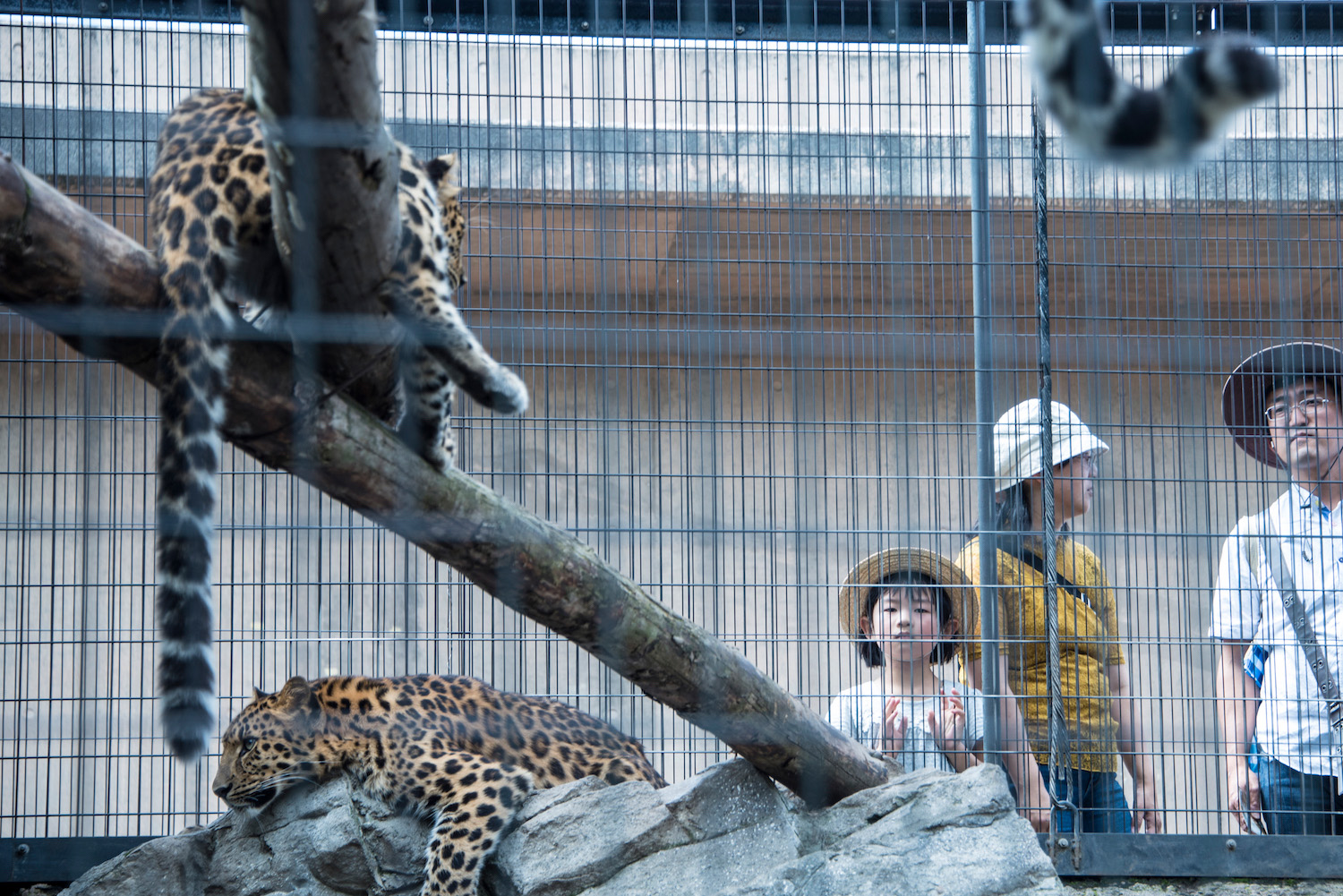
Speaking of flowers (did I ever stop?), Bette Midler’s “The Rose” was the soundtrack to Monday’s breakfast, though even a song about grave digging couldn’t have brought me down.
Still physically glistening from that morning’s run, my heart was likewise prismatic: I’d awakened to bright sunrise at quarter-to-five. I immediately drove to the so-called Silo Viewing Platform, where I would’ve watched the previous night’s fireworks if it had been clear, and watched cumulonimbus crawl across the clear sky for a good five minutes before I set up my camers.
As I headed back to the hotel, and to the lakefront to do the run I’d postponed in lieu of my drive, I noticed that even Mt. Yotei had peaked through the clouds, and reckoned today would be the day (at last!) that dispelled the seeming truth I’d learned about traveling to Hokkaido during summer.
And the bleaker one that had buzzed below an audible frequency for a merciful portion of my trip: Hokkaido was just not my island, neither in January nor July.
During my journey to Cape Shakotan, the scenery of my Hokkaido self drive shifted from beatific to bucolic to an almost-black sky that almost-rained enough to make me wonder if it had already done so, earlier that morning, on the Cape. My camel-colored oxfords sank into the mud as I descended toward Shimamui Coast, albeit not as wholly as my bare feet had in the lavender fields of Furano.
“Your shoes are going to get ruined,” a young-ish woman said when I returned to the trail head after having gone down and up it. She clearly didn’t realize I’d already completed my trek without bringing any harm to my kicks.
(And she clearly didn’t notice the approach of the young mother, who not only wore stripper heels, but who was clutching a toddler no less than a year too old to be carried as she click-clacked toward the black rocks below.)
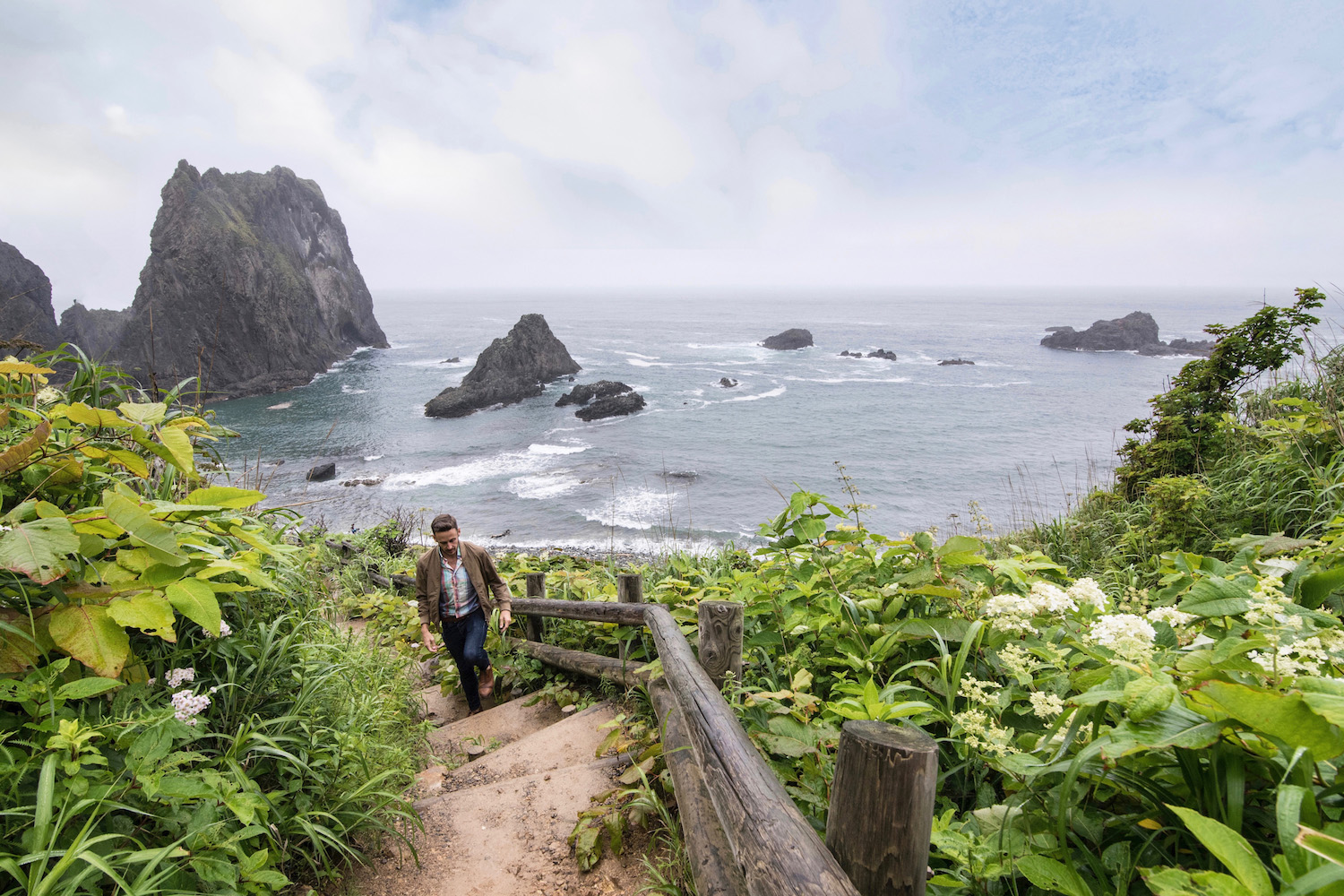
People differ about what they consider love to be—Bette Middler, the lady at the Cape in stripper heels, me and you. We also all differ about what makes a destination for us, and what defines a successful trip.
I can’t lie that traveling to Hokkaido in summer disappointed me, albeit not as much as my winter trip had. I wish the worst thing to happen on my cold-weather trip had been the death of my camera! Unfortunately, commencing my trip in Otaru had been the most minor sin of my Hokkaido winter itinerary.
To be sure, I became even more perplexed at the idea that anyone would visit Otaru’s famous canal without its famous icicles when I did this myself—what is the appeal of fighting one’s way through an apocalyptic crowd if the thing everyone is dying to see isn’t worth the world ending?
The Hokkiado beef donburi I scarfed down after my walk along the canal was mollifying, though I do wish it had been closer to rare than to medium. Details—I know.
That evening in Sapporo, I celebrated the successful completion of my Hokkaido summer itinerary with a trip up to the observation deck of the JR Building, in whose elevator I spotted a sad-looking older person (their sadness was so great it rendered them genderless) making their way up.
They had long since descended to ground level by the time I realized I’d had a glass of wine on the wrong side of the rooftop to properly enjoy sunset.
When I reach the street again, I walked southward toward Odori Park—I wanted to see Sapporo’s TV tower from ground level, since the most iconic element of Sapporo sightseeing isn’t visible from the top of the JR Building.
Nostalia quickly set in: I passed the BIC Camera where I’d replaced the DSLR body that crapped out oceanside in Otaru in ’15. As the neon of Susukino flashed before me, I remembered flinging the frozen starfish I’d found in the direction of the Kamatchka peninsula.
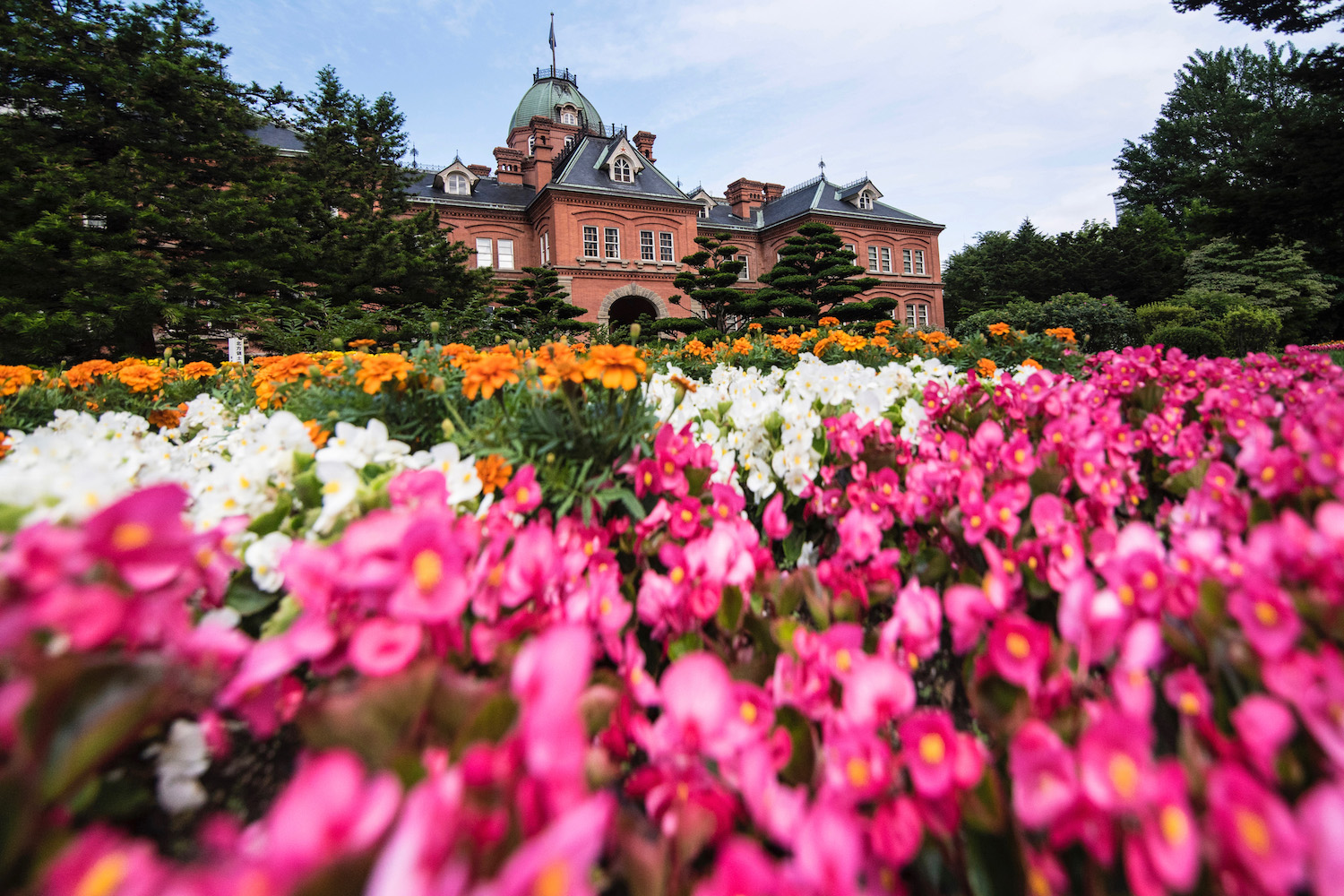
The next morning, as I made a quick photo expedition to the Old Hokkaido Government Building in the hour I had between my 5 am run and my latest possible departure to New Chitose Airport, I realized that Sapporo’s streets, in summer, were lined by hollyhocks I would’ve mistaken as weeds if I didn’t know better.
There were flowers everywhere in Hokkaido, even if the skies and the air sometimes belied the season.
The grounds of the building, whose plaque reminded me that precisely seven people founded the city of Sapporo (and with it, Hokkaido as part of Japan) exactly a century-and-a-half ago this year, were not yet open when I arrived. But the guard on patrol forgave my trespasses—he watched me climb over the chain with the “CLOSED” sign and onto the property, in fact.
On my walk to retrieve my rental car for the last time, I chose to stand at the street corner a few moments longer than I should have, and not just because I feared the elderly woman standing next to me would judge me for jaywalking. I wanted to savor my last real moment in Hokkaido in summer, though I have to be honest: I wondered whether or not I was actually there.
Maybe, I postulated, and stroked the stem of a hollyhock, I’m on my deathbed recalling my past, and I’m drugged up enough to believe this is my present.
The light turned green. I hoped, whether in time or decades too late, that this tsuyu‘s flood victims could evade reckoning with reality as easily as I’d done— they;d contended with an actual monsoon, after all.
I at least had lavender and hollyhocks, in spite of all the clouds and rain.

Robert Schrader is a travel writer and photographer who’s been roaming the world independently since 2005, writing for publications such as “CNNGo” and “Shanghaiist” along the way. His blog, Leave Your Daily Hell, provides a mix of travel advice, destination guides and personal essays covering the more esoteric aspects of life as a traveler.








